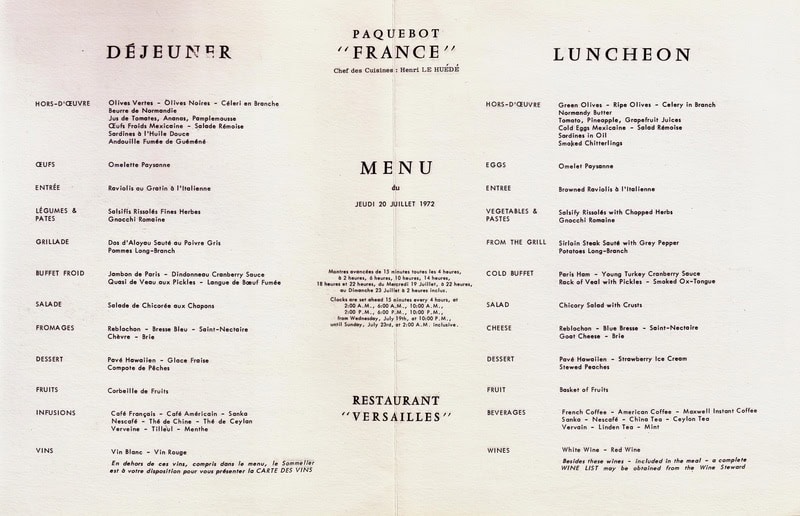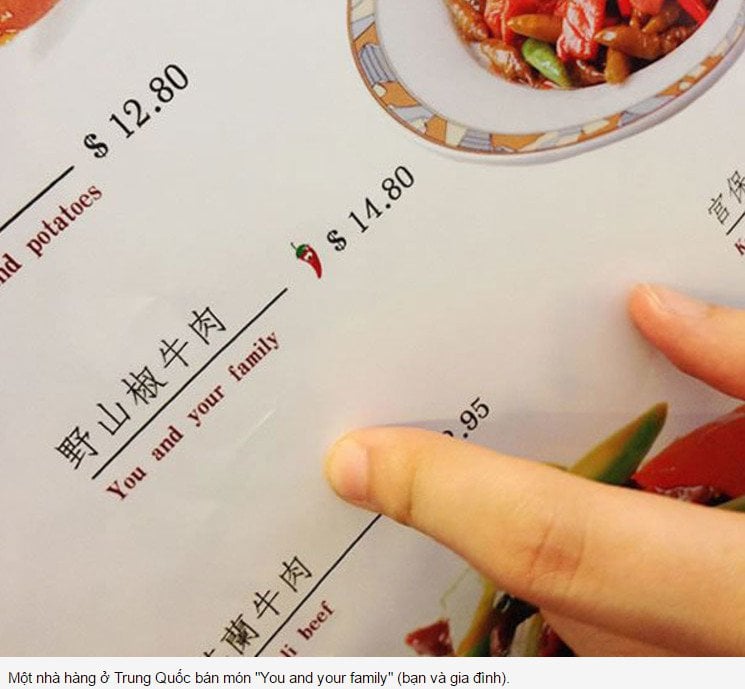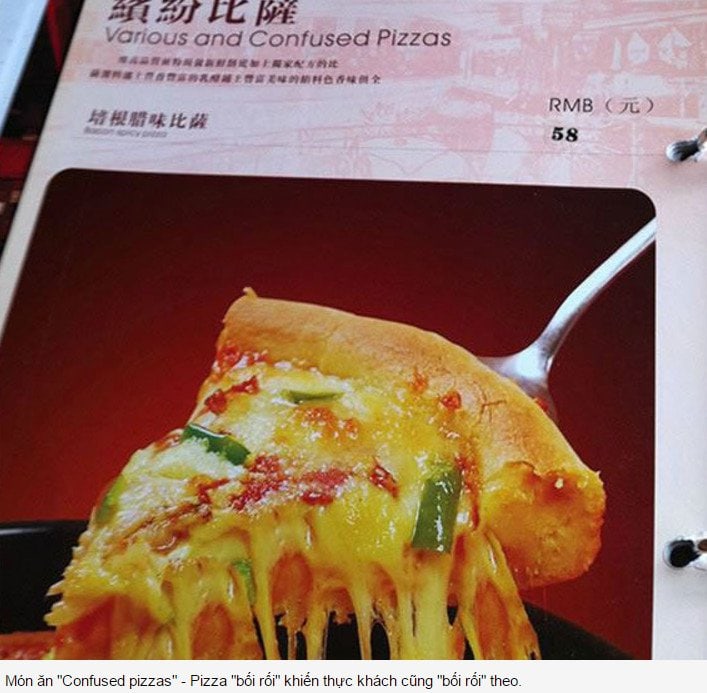Why do we still see so many worst menu translations these days? Menu translation is quite difficult because the terminology and context of menu items are very different as they have to be translated into other languages.
Because of growing tourism, restaurants that formerly catered to locals must cater to different nationalities, requiring their menus to be available in at least one other language that will be understood by the majority of the population. number of foreign visitors such as English. However, even if English is considered the universal language, you cannot expect that other cultures understand or even speak the language.
Note: Document translation hotel - restaurant - tourism
Why Poor Quality Menu Translation Happens
You can expect that chefs with limited English and restaurant managers will blame some of the worst menu translations. But even proficient translators will find menus and local food items and key ingredients a challenge to their translation skills.
- Not being familiar with culinary terms is one reason why poor quality translation occurs. Other mistakes occur due to differences in pictographic languages such as Japanese, Chinese and Korean, and alphabet-based languages such as English.
- In most cases, the menus are translated by people who are not professional translators, which complicates matters. This can make it difficult for restaurants to change their daily menu offerings. Some typos missed by reviewers, such as food with “Human taste” instead of “Human”.
- In addition to the reasons already mentioned, another reason we see some menus being mistranslated is because the restaurant tries to give an explanation or description of an item that doesn't really have any equivalent. in English, and even the menu available is not enough to explain the dish.
Related to the above is the fact that there are food terms in cultural association. For example, there is a dish in Cuba called ropa vieja, which is defined as minced beef but when translated literally means old clothes. - In general, menus are difficult to translate because there are no standards when it comes to translating food, and there are cultural, emotional, and meaningful associations. In some countries, they prefer to drink alcohol or eat something bitter, but in some cultures saying something bitter can be interpreted as an insult. Furthermore, it is not easy to give a brief description of a food item in the available space in a menu sheet.
Therefore, a professional translator should make the decision at his own discretion. If no translation is available in another language, the translator retains the originality and authenticity of that translation. Sometimes, the intention is to discriminate rather than to enlighten. When you see French or Italian items in a menu translation, it feels unique. If the translation is done correctly, even terms that look like foreign loanwords like ceviche, kimchi, sashimi, souffle, aioli, antipasto, bisque, bordelaise sauce, bouillabaisse… can be understood by diners.
Some menu items are too much even for locals. So a menu translator should exercise his or her creativity and shape the cultural nuances of the original terms into something that will delight and fascinate foreigners.
Note: Culinary Translation – Is Food Art or Science?
Some of the Worst Menu Translations
Here are a few examples of some of the worst menu translations expats find and share.
Note: Professional Travel Document Translation
- In the menu of a Swiss restaurant, one of the special dishes on the Children's Menu is "Friterad kyckling sötsur sås och ris" which translates as Deep Fried Baby. The actual translation of this special should be fried chicken (with) sweet and sour sauce and rice, which not only makes sense, but also sounds delicious.
- In some countries, pontoons are edible and served in a variety of ways, including adobo, BBQ, or barbecue. Actually, it's not the cock's float, but the meat of the chicken's tail. But would you eat your butt like in this menu from a restaurant in China? The translation says, “Our Sweet Ass” looks at the picture to be fried noodles with vegetables and perhaps some shrimp and chicken, including liver and chicken hearts. In the Philippines, is a version of Chinese fried noodles, “Pancit Canton.” Pancit is derived from pian i sit, a Hokkien term meaning 'convenience food'. Canton is a type of dry (wheat flour) noodles.
- Here is a humorous menu translation from Spanish. If you have never tried Rueda de ahumados, then you should give it a try. It is a delicacy in Spain and very popular among Spaniards. In English, this means smoked canape served on a plate or tray. However, the sad thing is that the translation somehow removes the deliciousness of this dish. Who would have thought that the translator would translate it to “It rotates of smokey”.
- Have you ever experienced a situation when you were with your friends and you couldn't decide what to eat or drink and just say whatever? However you are in luck because, in a Chinese restaurant, one of the drinks they offer is called Whatever. Are you brave enough to order it, even if you don't know what's in that drink?
- Did you know that there are dishes on the menu at Wikipedia? Trust the Chinese that they will do something extraordinary – at least in the menu translations. In a menu in China, these dishes were found: Fried Wikipedia, Wikipedia stir-fry with cherry chili, Steamed Eggs with Wikipedia. If you do not speak or read Chinese, then you cannot understand what the menu items mean. Are you brave enough to order a serving of Wikipedia? We are definitely not!
- There are also menu items that Google has blamed on, including: The Mermaid of the Deep, McDonald's Best Friend (do you know who he or she is?), Oysters, Fries. The menu item has no name or translation, because that said I could find it on Google but the food was delicious. At least the translator knows it's delicious.
- In another menu, the options for Rice War include real chicken and chicken. What is the difference between chicken and real chicken? It's the price! Fried Rice with Chicken is priced at 3,70 while Fried Rice with Real Chicken is pegged at 6,75. That's what you can get with a difference of just 3.05.
- We understand many women desire a sexy husband. But in this Chinese menu item, you can think twice about your wish. The menu says “Sixi Roasted Husband”. Do you want to try? It only costs 16 yuan.
- This special menu offers translations of the items in English. At least they tried but still failed. In Trucha Especial (Salmon Specials) is Sudado de Trucha. Trucha means salmon and Sudado means sweat. But in this case, it means cellar. The English translation provided is Sweater Gives Trout. Does salmon bring diners sweaters or does salmon feel cold after all that sweat?
- Spain is known for its great food. But they won't serve Iberians or tables to anyone. In one menu, Tabla de Ibericos, a selection of various frozen meats, has been translated verbatim as "Table for the Iberians".
- Seafood lovers may have come across mussels and other bivalve molluscs that are delicious even when just cooked in their own broth. In a Spanish restaurant, the dish is called Navajas al natural which means nail mussels cooked in their own sauce. Somehow whoever translated it named it Knives to the natural.
- Here is yet another menu item from a spanish restaurant whose verbatim translation takes away the delicacy of the dish. Sepia a la plancha con alioli became Sepia to the iron with Ali smelt. The actual translation should be grilled squid with garlic mayonnaise, it will be more delicious. However, the translator translated verbatim because red ink is cuttlefish; a la plancha has become 'to the iron' and Ali smelt refers to the sauce.
We understand that menu translations in any language can be difficult to find the right terminology from one language to another. In Idichthuat, we strive to give you the most accurate menu translation you need in over 100 languages. We have specialized experts knowledgeable about local ingredients, cooking methods and terminology. They decide when to do contextual translations or leave terminology out when appropriate.
In addition, our translation team includes native speakers who deeply understand the local culture and nuances of the language. Please contact us immediately so that your menu translation will be appreciated by customers.
Contact us today for the fastest service quote and consultation.
| ✔️ See more related information: | 👉 Reliable, Cheap, Professional Swedish Translation Chuyên |
| 👉 The Most Professional Electronic Translation | |
| 👉 Quick Translation of Seafood Documents | |

Nguyen Trung Khang - Talented interpreter and translator, passionate about translation
Nguyen Trung Khang is a talented interpreter and translator, with many years of experience in the field of translation and linguistics. He graduated from Ho Chi Minh City University of Education, majoring in Linguistics in 2015.
After graduating, Mr. Khang participated in a professional interpretation and interpretation training course at the University of Foreign Languages - Hanoi National University. He achieved a high-level certificate in interpreting and interpreting, and was also awarded a master's degree in linguistics.



